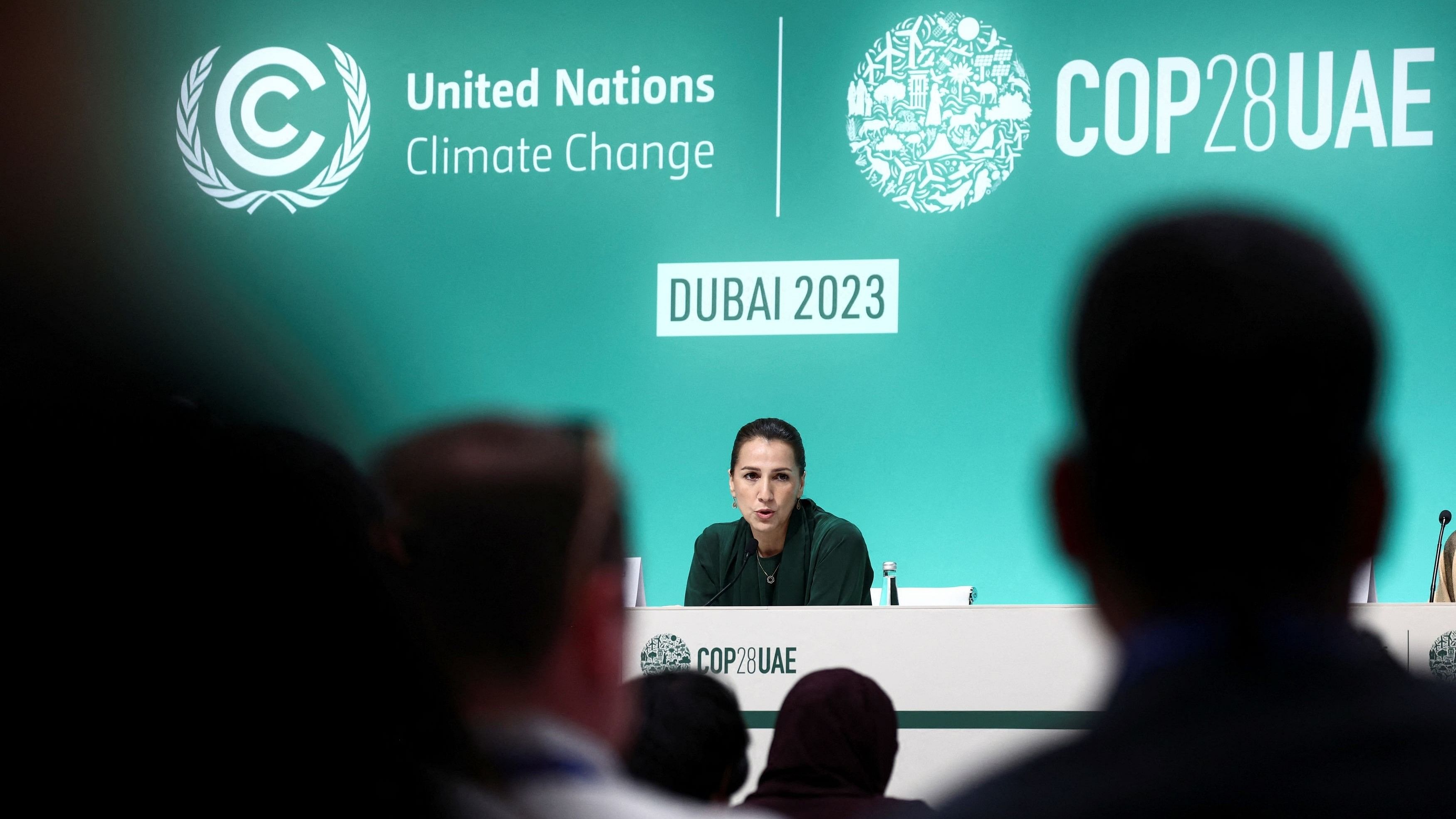
UAE Minister of Climate Change and Environment Mariam Almheiri speaks during a press conference at the United Nations Climate Change Conference COP28, in Dubai, December 10, 2023.
Credit: Reuters Photo
Dubai: Just two days before the UN climate talks here are scheduled to end, negotiators on Sunday released a draft document to guide countries' efforts to adapt to climate change and monitor collective progress. However, it falls short of expectations.
The Paris Agreement in 2015 introduced the concept of a Global Goal on Adaptation (GGA), a parallel to the global mitigation goal aimed at limiting global temperature rise to 1.5 degrees Celsius as compared to pre-industrial (1850-1900) levels.
Unlike mitigation, where progress can be tracked using a single metric, adaptation requires a more complex approach.
The Glasgow-Sharm El-Sheikh Work Programme on the Global Goal on Adaptation, initiated at COP26 in Egypt, started a series of workshops and negotiations to establish an operational framework for the GGA at COP28.
Though the document acknowledged that the finance required for adaptation "remains insufficient" and the gap between the funds available and the actual financial support needed is "widening", it doesn't quantify anything.
According to a UN report released last month, developing countries require $215-387 billion annually for climate adaptation, but they are only receiving about $21 billion.
This financial shortfall has led to frustration among poorer and developing nations most affected by climate change.
Zambia's Environment Minister Collins Nvozu, speaking on behalf of the African group, on Saturday said adaptation is a matter of survival for Africa and an agreement on a global goal of adaptation would be the most important outcome for Africa from COP28.
"Droughts, storms, and rising seas threaten our lives and livelihoods. The Adaptation Gap Report has revealed that the gap is much larger than previously thought. We must take immediate steps to close the adaptation gap," he said.
Mohamed Adow, the founder and director of Power Shift Africa, an independent think tank based in Kenya, said, "There is no mention of adaptation finance, and this is a challenge. If we don't close the adaptation finance gap now, there will be no way to do this ever."
The document includes references to 'equity and Common But Differentiated Responsibilities and Respective Capabilities (CBDR-RC)' in the final text, something developing countries are fighting hard for during the negotiations.
These principles recognise that countries' efforts to combat climate change should be viewed in light of their contributions to total emissions and that richer nations should shoulder primary responsibilities, given their significant historical emissions.
While the draft reiterates that developed countries should at least double adaptation support to developing nations by 2025 compared to 2019 levels, it lacks reference to any baseline.
There is a reference to “sustainable agriculture” in the text, as a solution for mitigation and resilience.
It also includes goals without specific targets related to water, food, health, and agriculture.
Harjeet Singh, head of global political strategy at Climate Action Network International, stressed the need to increase support for developing countries to meet specific adaptation targets currently under discussion.
'This action aims to protect communities from worsening climate impacts. Without immediate measures, we risk exposing people to increasingly severe consequences such as rising seas, intensified floods, and recurring droughts,' he said.
Ana Mulio Alvarez, a researcher at the climate think tank E3G, viewed the draft as the basis for a reasonable GGA framework.
'However, without robust means of implementation, the framework will remain hollow and toothless,' she said.
Means of implementation refers to finance and technology support from developed countries.
Li Shuo, director of China Climate Hub at the Asia Society Policy Institute, said: 'In a nutshell, the text risks supplying adaptation with sufficient finance.' Arun Krishnan from Climate Policy Initiative said it's encouraging to see the GGA recognizing the need for more adaptation finance, the importance of timeliness and predictability of adaptation finance and that concessional and grant-based financing are important tools in adaptation finance.
In the latest Landscape of Climate Finance report released by Climate Policy Initiative, we see that out of USD 1.27 trillion in climate finance flows in 2021-22, only USD 63 billion is allocated for adaptation. The allocation for adaptation has to increase given the acceleration of the effects of climate change globally. The intent of the GGA should be matched by global action on allocating more capital to adaptation. PTI GVS ZH ZH